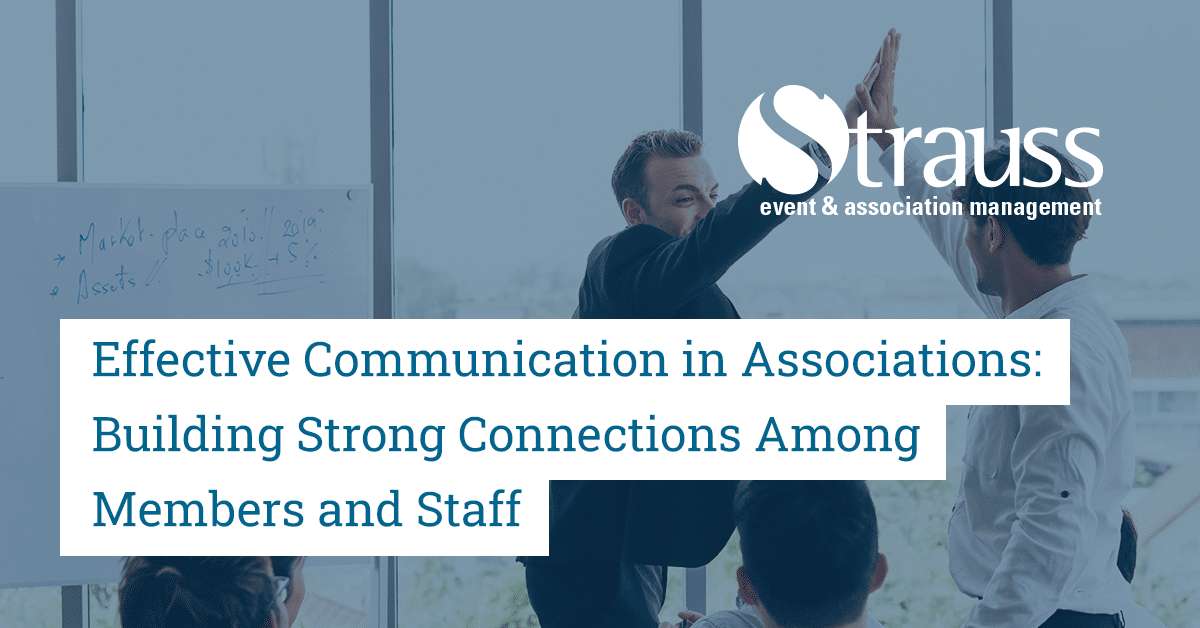Communication with members is the heart of every successful association. Whether it’s announcing important updates, sharing valuable resources, or encouraging a sense of community, effective communication is a steppingstone for a growing organization.
When members and staff are on the same page, great things can happen. In this blog, I will dive into the key factors of clear and impactful association communications and explore how it can strengthen the bonds within your community.
Why Effective Communication Matters
Clear and effective communication serves as the lifeline of any association, creating a channel through which information flows seamlessly. Here’s why it’s important:
- Increasing Trust and Transparency: Transparency in communications regarding decisions, initiatives, and changes builds trust among members and staff.
- Enhanced Engagement: Engaged members are the foundation of an association. Clear communication keeps members informed about events, opportunities, and resources, encouraging active participation.
- Reduced Confusion and Misunderstandings: Miscommunication can lead to misunderstandings, confusion, decreased engagement, and even conflict. By ensuring clarity in communication, associations can minimize these risks and maintain their effectiveness.
Four Key Strategies for Effective Communication
- Establish Clear Lines of Communication: Offer a few channels for members to access information, such as email newsletters, social media platforms, community forums, and a member-only association website. This diverse approach ensures every member’s needs are accommodated.
- Frequent Updates and Notifications: Keep members informed with regular updates across channels on upcoming events, important deadlines, and industry news. Consistent communication demonstrates that the association is active, engaged, and responsive to member needs.
- Targeted and Specific Messaging: Recognize the various needs of your members. Customize communication for different areas within your membership, ensuring that each group receives the appropriate information that aligns with their interests.
- Provide Staff with Training: Make sure staff have the necessary tools and training to communicate clearly and professionally. This includes writing skills for emails and newsletters, engaging in active listening during member interactions, and becoming proficient in conflict resolution techniques.
As you move forward on your association’s communication journey, remember that consistency, transparency, and member-centricity are key. Keep the lines of communication open, listen to your members’ feedback, and adapt your strategies to meet their evolving needs. Together, through effective communication, we can create a stronger, more connected association community using the following tools:
- Know Your Members: Take the time to understand the diverse needs, preferences, and interests of your members. This might involve conducting surveys, hosting focus groups, or simply engaging in conversations with members to gain insights.
- Tailored Communication: Recognize that not all members are the same. Choose your communication based on member types, interests, or engagement levels. This ensures that each group receives information that is relevant and valuable to them.
- Seek Feedback Regularly: Encourage members to share their feedback on different areas of the association, such as the effectiveness of your communication content and the impact of your events.
Communication is not just about sharing information; it’s about building relationships, fostering engagement, and creating a sense of belonging within your association. By adopting clear communication strategies, associations can nurture a vibrant community where members feel valued, informed, and empowered to participate.
In conclusion, effective communication is the foundation of a successful association. By using the strategies discussed in this blog you could open doors to a closer member base within your association. Communication goes beyond words; it builds relationships and nurtures member connections.

